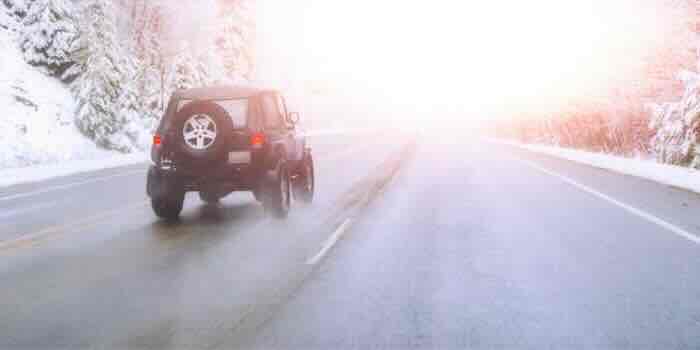By Dr. Bruce Smith ——Bio and Archives--March 25, 2024
HeartlandLifestyles | CFP Comments | Reader Friendly | Subscribe | Email Us

There is much that is positive to report from a trip to New England last week because Spring is on the way. It was a family visit journey, timed to allow a weekend there when grandkids were available. The plan was two days to get there, two days there, then two days back.
We left on Thursday, March 14 to make the two-day drive to the Boston suburbs. It was all winter grays and browns when we left, with nary a sign of spring anywhere. A major late winter storm was approaching our part of the heartland when we left our little freehold near the National Road west of Indianapolis and headed east to Columbus, Ohio, where we visited a family member.
Then we turned north onto I-71 to high-tail it past Akron and onto I-76 East. Northeast Ohio was the prettiest part of the trip east. It had obviously been a good winter for the hard red winter wheat that showed glowing emerald green across rolling acreage. Seeing winter wheat is always an encouraging sign. It means there are some better than average farmers around. It cheered me just a little.
Our visit in Columbus was delightful, but a little longer than we had planned, so we were dragging a bit when we got beyond Youngstown. We decided to stay the night near the Pennsylvania line, two hours shy of our usual stopping point. That’s where the storm caught us during the night. Next day in the gloom and wind we ran the wipers nearly all the way across Pennsylvania, New York, Connecticut, and up along the Mass Pike toward Boston. We made it to near Boston on time, but more tired than usual. We had a dinner off the grill with salmon that hadn’t traveled as far as it does to reach us in the Heartland.
We had planned plenty of activities and cooking while we were there so I could be the background guy while the grandkids enjoyed their Grammy. There were crafts and movies. I always loved a kitchen and I get lots of points and smiles when comfort food mealtime arrives. For Saturday night I used my daughter’s directions for making a memorable taco bar. All day Sunday a fine pot roast simmered in the crock pot. That’s a guaranteed home run every time. There were leftovers. It was a good visit.
The storm that blew us into Boston pulled down plenty of Canadian cold air and some decent sunshine during the two days there, but it had brought no signs of Spring save a solitary robin in the yard as we said our goodbyes Monday morning. We headed west on the Mass Pike to Sturbridge, making good time back across Connecticut and New York, through Wilkes-Barre, and toward our central Pennsylvania destination. Late that afternoon we began to see some hope of a break from Winter. Red maples had pushed out scarlet buds and every weeping willow glowed gold-green. Near Lock Haven there are long agricultural valleys parallel with I-80 and there my hopes began to grow. There were long stretches green with winter wheat, white roofs on red barns. By Lamar there were rows of white silage bales, orderly dairy farms and clear signs of Amish and Mennonite ownership. I could see strips of corn stubble where the manure spreader had been and young Holstein heifers enjoying some early pasture. Close by PA 126 there was the heartwarming sight of a clothesline loaded with pastel colors and work shirts. Spring just might make it after all.
In Clearfield the hotel people remembered us (in a good way) and we had a quiet stay. But when we woke up Tuesday morning there was some snow on the ground that we hoped would not make the roads slippery. We left cautiously in the dark. As we climbed into the central Pennsylvania mountains, snow showers made it hard to see sometimes and the wind tried to lead us astray. We tanked up on more coffee and kept going. Not an hour into our drive that day we began to see warnings of an accident ahead with an accompanying detour.
Support Canada Free Press

Sure enough, when we came to the exit, we all crawled off onto the state highway where we sat in front of the international headquarters of the American Rabbit Breeders Association waiting for traffic to move. Then we began winding westward back and forth across the hilly landscape, the air full of flurries.
This detour reminded me why it’s always good to get off the interstate when possible. We went past Strawberry Farm Road, barns with hex signs, country churches and a reformed church, then into a gloomy hemlock woods as we wound down into a valley bottom with a whitewater creek. Then we went even further down into a bigger valley, crossing the Allegheny River. We turned up river, driving along the green water. When we looked up, we saw the consequences of the accident that had happened at 1:30 that morning. A very high bridge carries I-80 across the Allegheny. We could see that heavy trucks had been stranded on that bridge much of the night in the snowstorm, their amber lights showing through the cold air and snow atop the cabs. The accident had been just to the west in front of them. They had stopped in time, but spent a perilous night high above the river in the dark. I was glad it was not us. Another fifteen minutes of curvy road brought us to the ramp back onto 80 beyond the accident. We rolled on freely after that. The eastbound backup was three miles long.
Across the line into Ohio we pulled into a Dunkin Donuts for a couple of favorites. Even there we saw green grass pushing through the snow and forsythia spreading like a wildfire around bridges and along fencerows.
It didn’t seem like real Heartland until we had moved beyond Akron and Youngstown and turned onto I-71 on the southbound side. The ground began to roll gently and the green was noticeable everywhere. Around Ashland, Ohio there appeared real farms with white barns, hog operations, and farmhouses from the middle of the 19th Century. My spirits lifted more and more as we saw sheep warming on a hillside in the sun, calves on pasture, and just a few lingering papery beech leaves from last fall in the occasional woods. We were into real Amish country now with plain white houses and carriage horses in paddocks near ample barns. Then I saw something that was common in my early days, but is rare anymore. One Amish farm had a proper wire corncrib filled to the top with golden ear corn. That corn had been picked with a picker, then put in the top of the round crib with an elevator where it dried in the cold winter air. That’s the old way. I knew at least some of it would be ground, with the cobs, for feed for milk cows. There’s hay and silage to be put up, and year round chores on a real old school dairy farm. Further along an Amish sawmill showed piles of slabs cut for firewood, lots of sawdust, and sheds for drying lumber.

The rest of the way across I-70 in Ohio and Indiana Spring had made its appearance just since we had passed by going the other way. Bradford pears had opened their white flowers and even an occasional pear or plum had volunteered some blooms. The winter wheat was strong looking here, too, and the roadsides were thick with eager grass reaching for the sunlight. As we neared home, the first subtle magenta redbud branches made an appearance. There would be no stopping Spring now that the date had officially arrived. Next morning I checked the marker on the fence post that pointed due east on the equinox, and it was right on the money. Farm people always want to know their directions.
That same first day of Spring morning I walked around the corner of the house to see the first lavender buds on the lilacs I planted four years before. We’re going to have our first lilac blooms this year! I smiled at them, then heard another harbinger of spring. With her tail bobbing up and down, a familiar bird announced that Spring could begin officially. She sat on the garden fence and sang Phoe-be, Phoe-be! Phoe-be, Phoe-be! Spring has arrived in the Heartland right on schedule.

View Comments
Dr. Bruce Smith (Inkwell, Hearth and Plow) is a retired professor of history and a lifelong observer of politics and world events. He holds degrees from Indiana University and the University of Notre Dame. In addition to writing, he works as a caretaker and handyman. His non-fiction book The War Comes to Plum Street, about daily life in the 1930s and during World War II, may be ordered from Indiana University Press.